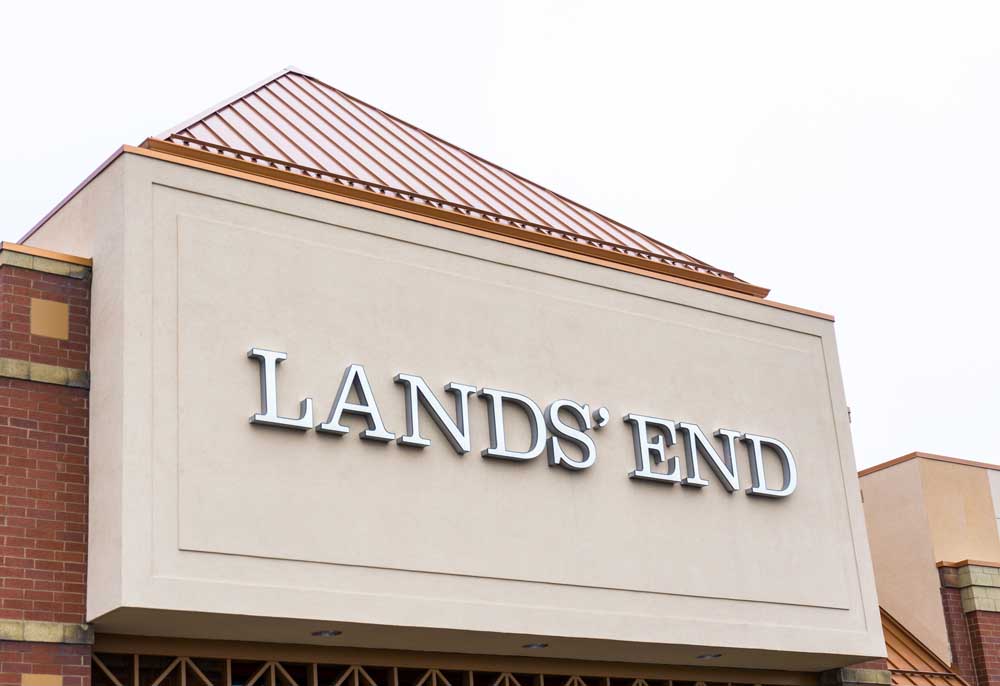Lands’ End reinvents itself
Published 12:00 am Sunday, March 3, 2019

- Land's End retail store exterior. Lands' End is an American clothing retailer that specializes in casual clothing, luggage, and home furnishings. (Ken Wolter/Dreamstime/TNS)
In the face of a changing market, one brand is scouting for new locations and envisioning a 75-store expansion over the next five years.
Lands’ End is branching out from the troubled Sears department stores, where it has operated shop-within-a-shop concepts since 2005, and opening standalone stores, including one in Hunt Valley, Maryland, that opened Thursday.
Trending
The Lands’ End at Hunt Valley Towne Center is the first new location this year of up to 15 planned for the Northeast.
“The retail expansion is a big push for us,” said Claudia Mazo, Lands’ Ends senior vice president of retail.
With roots as a catalog retailer selling nautical-inspired apparel, Land’s End is remaking itself with an improved online experience and new fleet of stores, a strategy set when CEO Jerome Griffith took over in March 2017.
The company is eyeing open-air lifestyle centers, and targeting markets populated by the online and catalog consumers who account for the bulk of the company’s $1.4 billion in sales.
The new course appears to be paying off, with Lands’ End marking the sixth straight quarter of sales growth in November and the fifth straight quarter of increased earnings before interest, taxes and depreciation.
Sales grew nearly 5 percent to $341.6 million in the three-month period ended Nov. 2.
Trending
That increase occurred even with a 21 percent drop in sales at retail stores — a result of losing 63 Lands’ End Shops at Sears locations during the quarter, either as part of Sears’ Chapter 11 store closures or Lands’ End’s decision to not renew Sears leases. Lands’ End’s sales have been increasing online and at company-operated stores open at least a year.
Lands’ End is likely benefiting from the availability of retail space, said Mark Millman, CEO of Owings Mills, a retail recruitment firm.
Because recent store closings, Lands’ End is able to negotiate better terms with landlords at a time when open-air centers are seeking new-to-the-market tenants to keep their centers fresh, he said.
“It’s a smart move on their part to separate themselves from Sears,” Millman said.
Sears bought Lands’ End for $2 billion in cash in 2002, expanding its retail presence in its department stores.
Lands’ End operated in about 300 Sears stores at one time. In 2014, Sears spun off the brand, now publicly held.
The number of Lands’ End Sears locations has dwindled to about 40.
The apparel brand plans on pulling out of Sears completely by the end of 2019, “which is why expanding our own retail footprint is so important to us,” Mazo said. “Building that direct relationship with our customer, providing them with customer service in our own environment and showing the product in our own home is really important to us.”
Five locations opened last year, in Illinois, Massachusetts, New York and New Jersey, adding to 11 older company stores, the last of which opened two decades ago.
“We cannot open stores as fast as Sears is closing them,” Mazo said.
New stores are designed with a residential feel to showcase a mix of new styles and classics such as striped polos and duffel bags. New technology is scattered throughout the store.
“We need to ensure that our customer is able to come to our stores and touch and feel,” Mazo said. “We need to provide a balance between online and brick-and-mortar retail. Those are the brands that are going to stay here for the long run.”








